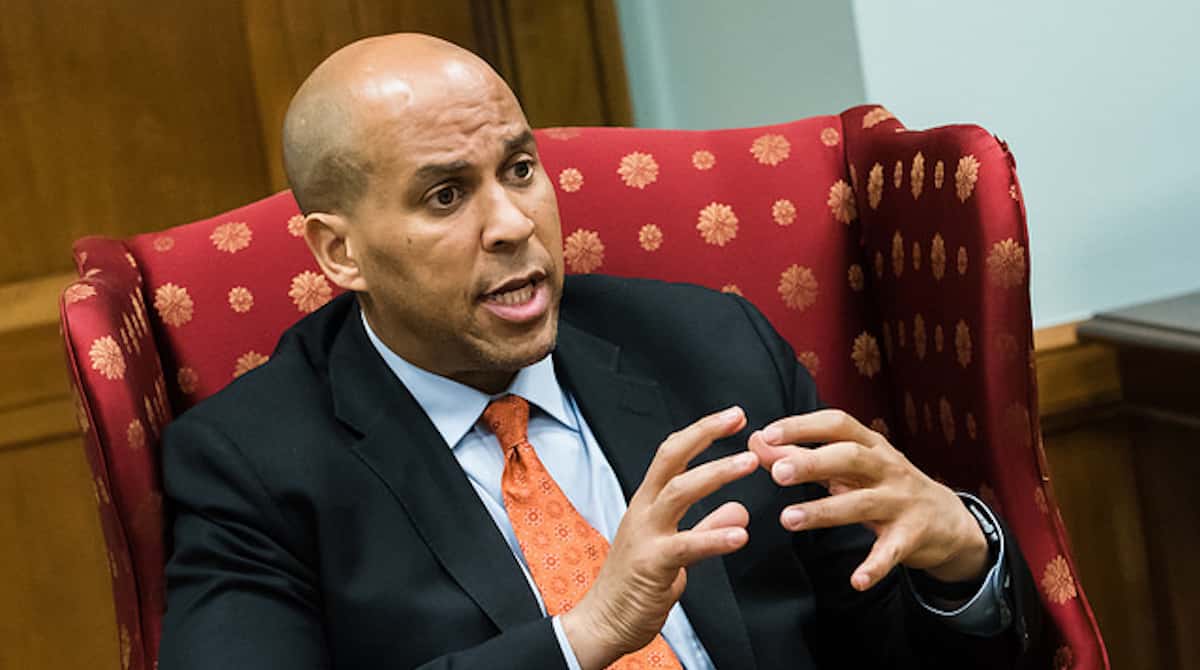Booker pushes to allow vets extra time to finish education
Sen. Cory Booker says that he desires to see legal guidelines trade to allow veterans greater time to complete their schooling.
Veterans currently have 36 months of in-class time to complete their university levels under the GI Bill. But for some, this isn’t sufficient time.
Rutgers University junior Matthew Kelly says that he has the simplest seven months left to complete his computer science diploma below the present-day invoice. He says that, like many veterans, there was an extended gap between excessive college and college, so he has to take a few remedial guides.
Navy veteran Dennis Penny says that he had a comparable enjoy.

“I hadn’t been in high school for 10 years after I was given out [of the Navy]. I turned into 29,” he says. “So I had to take 3 or 4 semesters of remedial classes, and that took away time additionally from my GI Bill.”
Sen. Booker joined veterans at Rutgers Monday to cope with the situation. He says that he desires to provide veterans with more time for his or her schooling.
“We are boosting each their employment rate and their earning capacity after commencement,” he says.
The senator says he will introduce regulations that could enlarge help for a further 15 months for qualified veterans. He says that he hopes there may be enough bipartisan assist to skip the bill this yr.
Some veterans say that this will move in a protracted manner towards making improvements to themselves.
“You’ll have veterans dropping out of college because they’re now not going, which will give you the money to pay for their own training,” says Army veteran Justin Sasso.
The bill also includes measures to make it viable for more veterans to transfer their training advantages to an established one.
Since 2000 the sector’s eyes have been on Finland’s training machine after PISA (Program for International Student Assessment) introduced Finland’s ranking of first in studying and a few of the pinnacle 5 in math and technological know-how. Every three years, PISA exams over 1/2-a-million 15-year-olds in 70 nations to a degree their proficiency in reading, math, and technology. Since 2000 Finland has led in math and technological know-how. Most lately, in 2009, they ranked 2nd in science, 1/3 in studying, and 6th in math, whilst America has always positioned a few of the middle.
What makes Finland’s faculties so a hit? Some say it is their attitude that higher instructors make for better colleges. Finland’s 8 Education universities accept the simplest, approximately ten percent of all applicants. Teaching is visible as a very prestigious profession, one you need to be rather certified for. All teachers need a Master’s Degree in Education.

“The transformation of Finn’s education device began a few forty years in the past as the important thing propellant of the united states’ financial healing plan,” says Lynell Hancock, a professor at Columbia University.
Hancock explains that the teachers in Finland have a “whatever it takes” mentality. ““Many faculties are small enough so that instructors know every student. If one method fails, teachers consult with colleagues to try something else,” she says.
One of America’s downfalls may be our fixation on the effects of standardized checks. While Obama says that he doesn’t suggest “teaching to the check,” his proposed RESPECT software might depend largely on the outcomes of student testing to signify whether or not or not an instructor is doing excellent activity. This, presently, is the first-rate developed system of measuring pupil progress on a prime scale and trying to reform education.
Pasi Sahlberg, a former math and physics instructor in Finland’s Ministry of Education and Culture, compares the American and Finnish Education systems by examining this mass-trying out principal mainly. He says that they do not externally study their faculties or trouble all their students with standardized trying out during Finland. “The United States,” Sahlberg addresses, “truly can’t go away curriculum design and student evaluation in the palms of schools and instructors except there may be the similar public self-belief in schools and teachers.”
Students in Finland are only given one evaluation check at the stop of excessive school. Other than that, there aren’t any mandated standardized exams in Finland, and all schools are publicly funded. Educators in Finland, in fact, had little idea of their very own achievement till 2000, when the primary consequences from PISA have been launched.
“Today standardized take a look at scores are the most not unusual manner of figuring out whether or not faculties are doing an excellent job,” Sahlberg states. “According to the Center for Public Education, standardized trying out has expanded coaching to the check, narrowed curricula to prioritize reading and mathematics, and distanced teaching from the art of pedagogy to mechanistic instruction.”
Sahlberg believes that standardizing testing discourages individuality and appreciation of man or woman strengths. He advises that we forestall teaching children to be similar; however, as an alternative, “assist them in discovering their very own talents and training them to be special from one another.” “Diversity,” he says, “is richness in humanity and a situation for innovation.”

“We put together kids to discover ways to learn, now not the way to take a take a look at,” Sahlberg explains. Timo Heikkinen, a Helsinki important, argues, “If you best degree the facts, you omit the human issue.